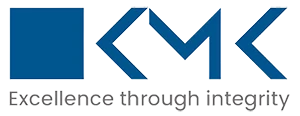Preventing Financial Fraud & Data Breaches: Why U.S. Firms Must Prioritize Cybersecurity in 2025

In 2025, the threat landscape for businesses has evolved well beyond firewalls and antivirus software. Today’s cybercriminals are smarter, faster, and far more targeted—especially when it comes to financial data.
U.S. firms, particularly those in accounting, finance, and professional services, are high-value targets for cyberattacks. Whether it’s a phishing scheme, a business email compromise (BEC) attack, or an insider siphoning funds, the cost of failure is steep—measured in millions of dollars, reputational damage, and regulatory penalties.
If your business hasn’t already made cybersecurity a boardroom priority, now is the time. This guide will help U.S. firms understand why it’s critical to prevent financial fraud, mitigate data breach risks, and implement practical security controls to protect what matters most: your clients, your money, and your reputation.
Recent Breaches: A Wake-Up Call for the Accounting Industry
In just the last year, multiple U.S. accounting firms have been targeted by cybercriminals exploiting email vulnerabilities, cloud misconfigurations, and lax internal controls. High-profile cases include:
- BEC scams that tricked partners into wiring hundreds of thousands of dollars to fraudulent vendors
- Phishing campaigns that compromised client tax records during filing season
- Insider breaches involving employees who sold sensitive financial data to competitors or identity theft rings
These are not isolated incidents—they are systemic, and U.S. firms of all sizes are at risk. If your firm handles payroll, tax filings, or accounts payable, you’re likely already on a threat actor’s radar.
The Financial Impact of Cyber Incidents
A report by IBM and the Ponemon Institute found that in 2024, the average cost of a data breach in the U.S. exceeded $9.5 million—with finance and professional services among the hardest-hit sectors.
The leading contributors to breach costs include:
- Regulatory penalties (especially under SOX, GLBA, and IRS requirements)
- Client loss and churn
- Lawsuits from affected stakeholders
- Cyber insurance premium hikes or denial of coverage
- Operational downtime and remediation costs
By investing proactively in data breach prevention and fraud controls, firms can avoid far more expensive damage down the road.
Top Threats U.S. Firms Must Defend Against
Let’s look at the primary attack vectors plaguing U.S. businesses and how they relate to financial fraud and data security lapses:
- Phishing and BEC Scams
Attackers impersonate CEOs, vendors, or clients to trick staff into transferring funds or clicking malicious links. These emails often look legitimate and bypass standard spam filters.
- Insider Threats
Disgruntled or careless employees can expose data, transfer funds, or install malware—especially in firms with weak access controls.
- Ransomware Attacks
Hackers encrypt your systems and demand payment for release, often targeting firms with large client datasets and weak backup procedures.
- Credential Theft
Stolen passwords (often bought on the dark web) are used to log into systems and siphon financial data or reroute payments.
- Third-Party Risk
Your outsourced accounting or IT partner may have access to sensitive data. If their systems are compromised, so is yours.
Cybersecurity for U.S. Firms: What Regulators and Clients Now Expect
In 2025, U.S. regulators and insurers have stepped up scrutiny around data security and fraud prevention. Your firm may be required to demonstrate:
- Written Information Security Plans (WISPs)
- Vendor due diligence protocols
- Incident response policies
- Client notification procedures under state breach laws
- Data encryption and MFA policies
Clients, too, expect their CPAs and financial partners to maintain modern, compliant, and tested cybersecurity frameworks. Failure to do so may result in lost deals, lawsuits, or insurance denial.
How to Prevent Financial Fraud & Data Breaches: Practical Steps
To stay ahead of rising threats, U.S. firms should adopt a layered security approach. Below are the core elements of a strong fraud and data breach prevention strategy:
- Multi-Factor Authentication (MFA)
Enable MFA for all users accessing financial systems, portals, or cloud storage. It prevents unauthorized access even when credentials are compromised.
- Role-Based Access Control (RBAC)
Limit who can see, edit, or approve financial transactions. The principle of “least privilege” is key to insider threat protection.
- Secure Vendor Management
Vet all third-party partners (especially offshore) for SOC 2 compliance, data security policies, and incident response readiness.
- Email and Phishing Awareness Training
Train your staff quarterly to spot fake emails, fraudulent invoices, and urgent fund transfer requests. Simulated phishing tests can improve detection rates by up to 70%.
- Data Encryption
Encrypt all sensitive data—at rest and in transit. This includes tax documents, payroll records, and audit workpapers.
- Segregation of Duties in Finance Workflows
Avoid giving one person complete control over initiating and approving transactions. Use digital workflows with dual approval settings.
- Regular Backups and Recovery Testing
Store backups offline or in separate secure environments. Test recovery at least once per quarter to ensure business continuity.
- Incident Response Plan
Document clear steps to follow during a breach—including who notifies clients, files reports, and contacts regulators. Don’t wait to create this when disaster strikes.
Read Also: Top Cybersecurity Best Practices for U.S. Accounting Firms Managing Client Financial Data in 2025
KMK’s Approach to Secure Finance Operations
At KMK, we take fraud prevention and data breach prevention as seriously as you do. As an offshore partner trusted by 100+ U.S. clients, we integrate security into every layer of our services:
- SOC 2-aligned controls and internal audit checkpoints
- Role-based access restrictions across delivery teams
- Encrypted portals and secure collaboration tools
- MFA-enabled platforms and password policy enforcement
- Employee training on phishing and BEC scams
- Incident response simulations and data loss prevention workflows
Whether we’re handling your payroll, accounts payable, or fund reporting, your data stays protected, traceable, and compliant.
Final Thoughts: Security Is No Longer Optional
Cybersecurity isn’t just an IT issue—it’s a business imperative. In 2025, U.S. firms that fail to prevent financial fraud or protect client data are not just facing operational risk. They’re risking their license, their reputation, and their future. Proactively investing in data breach prevention and strong internal controls is no longer a “nice-to-have.” It’s the only way to do business in a world where trust is currency. Still unsure if your accounting workflows are secure enough? That’s where KMK comes in. Let’s help you identify vulnerabilities, shore up your defenses, and build a finance operation you can trust—end to end.
About the Author
Bert Wilson serves as our U.S. representative and client success manager, specializing in U.S. tax and accounting services. With expertise in tax compliance, financial reporting, and outsourced accounting solutions, Bert helps clients navigate complex financial challenges. Holding a Master’s degree in accounting and having obtained his C.P.A. license from the state of Colorado, he ensures client expectations are exceeded through tailored solutions and seamless collaboration with our India team. Passionate about building relationships, Bert enjoys both early mornings and outdoor sports, embodying a proactive approach to success
serves as our U.S. representative and client success manager, specializing in U.S. tax and accounting services. With expertise in tax compliance, financial reporting, and outsourced accounting solutions, Bert helps clients navigate complex financial challenges. Holding a Master’s degree in accounting and having obtained his C.P.A. license from the state of Colorado, he ensures client expectations are exceeded through tailored solutions and seamless collaboration with our India team. Passionate about building relationships, Bert enjoys both early mornings and outdoor sports, embodying a proactive approach to success
Let’s Take Our Conversation Ahead
KMK is a top outsourced accounting and tax service provider. We offer end-to-end accounting and tax services for small to mid-sized businesses, with a team of 875+ professionals, including certified public, chartered, and staff accountants.
USA:
651 N Broad St Suite 205, Middletown, DE 19709, USA
Phone: 310-362-2511
India:
300, Sankalp Square-3B
Sindhu Bhavan Marg,
Ahmedabad, Gujarat 380058
For Career: 91-98240-42996
Developed by Bluele | Copyright © 2025 | KMK Ventures Private Limited. | All Rights Reserved


